History
A Lauterecken Castle was built in the Middle Ages within the Verdun estate of Medard. Gerlach I (1112-1146), a descendant of the counts of Nahe, founded the County of Veldenz (named after the town on the Moselle). The blue Veldenz lion in the coat of arms of Lauterecken still recalls this family. The castle with its characteristic Veldenz tower was first mentioned in 1343. Around 1349, Veldenz received town rights. In 1444, the Wittelsbach Stephen, Count Palatine of Simmern-Zweibrücken, widower of Anna of Veldenz, inherited the County of Veldenz and of the Veldenz share of the County of Sponheim from his father-in-law, and formed the County Palatine of Zweibrücken. A century later (1532), the child Wolfgang, Count Palatine of Zweibrücken inherited the lands, and was cared for by his uncle and regent, Rupert. In 1543, when Wolfgang reached majority and took on the responsibility of office, he enacted the Marburg Contract, giving Rupert the County of Veldenz, including the Ämter (districts) of Veldenz and Lauterecken, as well as the Jettenbach jurisdiction and Remigsberg House.
As founder of the Palatinate-Veldenz line, Rupert Lauterecken raised Lauterecken to the status of a residence town and had a representative schloss built. His son, the "astute" and visionary George John I, Count Palatine of Veldenz, married the Swedish princess Anna Maria from the House of Vasa. He extended the county to include areas of Electoral Palatinate, and later moved his residence to the Alsatian town of Lützelstein (La Petite-Pierre) and founded Pfalzburg. When George John died in 1592, his state was divided between his sons George Gustavus and Leopold Louis, until the Protestant dynasty of the Palatinate-V Lauterecken finally came into existence in 1733 after many years of disputeKurpfalz. In the later Bavarian period, when Zweibrücken's house was on the Bavarian throne, the Veldenz lion was absorbed into the Bavarian coat of arms. The bones of 15 members of the House of Palatinate-Veldenz rest in the Provost's Church on the nearby Remigiusberg.
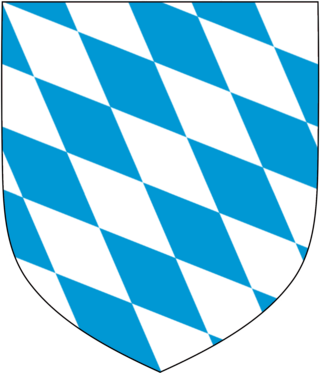
The House of Wittelsbach is a former German dynasty, with branches that have ruled over territories including Bavaria, the Palatinate, Holland and Zeeland, Sweden, Denmark, Norway, Hungary, Bohemia, the Electorate of Cologne and other prince-bishoprics, and Greece. Their ancestral lands of the Palatinate and Bavaria were Prince-electorates, and the family had three of its members elected emperors and kings of the Holy Roman Empire. They ruled over the Kingdom of Bavaria which was created in 1805 and continued to exist until 1918.
Duke in Bavaria was a title used among others since 1506, when primogeniture was established, by all members of the House of Wittelsbach, with the exception of the Duke of Bavaria which began to be a unique position. So reads for instance the full title of the late 16th century's Charles I, Count Palatine of Zweibrücken-Birkenfeld and patriarch of the House of Palatinate-Birkenfeld: "Count Palatine by Rhine, Duke in Bavaria, Count to Veldenz and Sponheim". The title grew in importance as Wilhelm, Count Palatine of Zweibrücken-Birkenfeld-Gelnhausen began to use it, in the early 19th century, as his primary title – Duke Wilhelm in Bavaria. This choice has also had effect for his descendants.

Lauterecken is a town in the Kusel district in Rhineland-Palatinate, Germany. It is the seat of the Verbandsgemeinde Lauterecken-Wolfstein, to which it also belongs. Lauterecken bears the nickname Veldenzstadt, after the comital family that once held sway here. It is also a state-recognized tourism resort town, and in terms of state planning is laid out as a lower centre.

Palatinate-Zweibrücken was a state of the Holy Roman Empire with full voting rights to the Reichstag. Its capital was Zweibrücken. Its reigning house, a branch of the Wittelsbach dynasty, was also the Royal House of Sweden from 1654 to 1720.

The County Palatine of Veldenz was a principality in the contemporary Land Rhineland-Palatinate with full voting rights to the Reichstag. The county was located partially between Kaiserslautern, Sponheim and Zweibrücken, partially on the Mosel in the Archbishopric of Trier. A municipality of the same name, Veldenz, and a castle, Schloss Veldenz, are located in the district of Bernkastel-Wittlich.
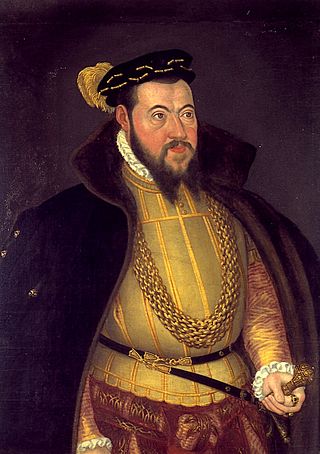
Count Palatine Wolfgang of Zweibrücken was member of the Wittelsbach family of the Counts Palatine and Duke of Zweibrücken from 1532. With the support of his regent, his uncle Rupert, Wolfgang introduced the Reformation to Zweibrücken as early as 1537.

Medard is an Ortsgemeinde – a municipality belonging to a Verbandsgemeinde, a kind of collective municipality – in the Kusel district in Rhineland-Palatinate, Germany. It belongs to the Verbandsgemeinde Lauterecken-Wolfstein.

Veldenz is an Ortsgemeinde – a municipality belonging to a Verbandsgemeinde, a kind of collective municipality – in the Bernkastel-Wittlich district in Rhineland-Palatinate, Germany. It is the former main seat of the County of Veldenz, once a prominent principality to which belonged 120 villages and towns now in Rhineland-Palatinate and northern Alsace and Lorraine.

Föckelberg is an Ortsgemeinde – a municipality belonging to a Verbandsgemeinde, a kind of collective municipality – in the Kusel district in Rhineland-Palatinate, Germany. It belongs to the Verbandsgemeinde of Kusel-Altenglan, whose seat is in Kusel.
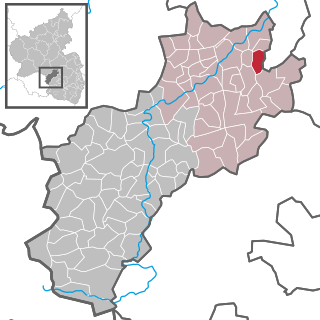
Ginsweiler is an Ortsgemeinde – a municipality belonging to a Verbandsgemeinde, a kind of collective municipality – in the Kusel district in Rhineland-Palatinate, Germany. It belongs to the Verbandsgemeinde Lauterecken-Wolfstein.

Heinzenhausen on the Lauter is an Ortsgemeinde – a municipality belonging to a Verbandsgemeinde, a kind of collective municipality – in the Kusel district in Rhineland-Palatinate, Germany. It belongs to the Verbandsgemeinde of Lauterecken-Wolfstein.
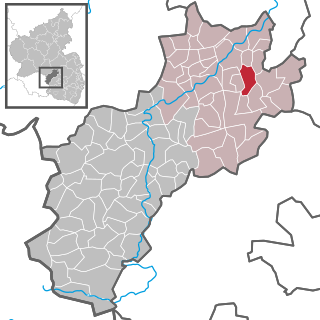
Hohenöllen is an Ortsgemeinde – a municipality belonging to a Verbandsgemeinde, a kind of collective municipality – in the Kusel district in Rhineland-Palatinate, Germany. It belongs to the Verbandsgemeinde Lauterecken-Wolfstein.
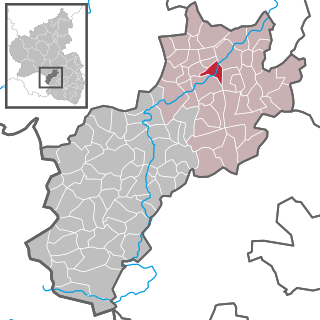
Wiesweiler is an Ortsgemeinde – a municipality belonging to a Verbandsgemeinde, a kind of collective municipality – in the Kusel district in Rhineland-Palatinate, Germany. It belongs to the Verbandsgemeinde Lauterecken-Wolfstein.

Lohnweiler is an Ortsgemeinde – a municipality belonging to a Verbandsgemeinde, a kind of collective municipality – in the Kusel district in Rhineland-Palatinate, Germany. It belongs to the Verbandsgemeinde Lauterecken-Wolfstein.

Nerzweiler is an Ortsgemeinde – a municipality belonging to a Verbandsgemeinde, a kind of collective municipality – in the Kusel district in Rhineland-Palatinate, Germany. It belongs to the Verbandsgemeinde Lauterecken-Wolfstein.
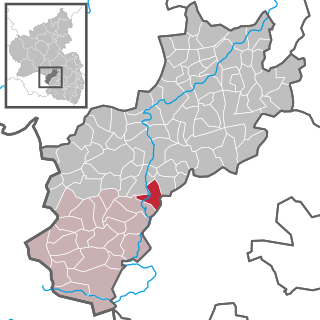
Matzenbach is an Ortsgemeinde – a municipality belonging to a Verbandsgemeinde, a kind of collective municipality – in the Kusel district in Rhineland-Palatinate, Germany. It belongs to the Verbandsgemeinde of Oberes Glantal.

Theisbergstegen is an Ortsgemeinde – a municipality belonging to a Verbandsgemeinde, a kind of collective municipality – in the Kusel district in Rhineland-Palatinate, Germany. It belongs to the Verbandsgemeinde of Kusel-Altenglan, whose seat is in Kusel.

The House of Palatinate-Birkenfeld, later Palatinate-Zweibrücken-Birkenfeld, was the name of a collateral line of the Palatine Wittelsbachs. The Counts Palatine from this line initially ruled over only a relatively unimportant territory, namely the Palatine share of the Rear County of Sponheim; however, their importance steadily grew. All living members of the House of Wittelsbach descend from Palatinate-Birkenfeld, which thus became the parent branch of the Kings of Bavaria.

George John I was the Count of Veldenz from 1544 until 1592.

Anne of Veldenz was a Countess suo jure of Veldenz. She was a member of the Hohengeroldseck family, the second family to rule Veldenz.



















